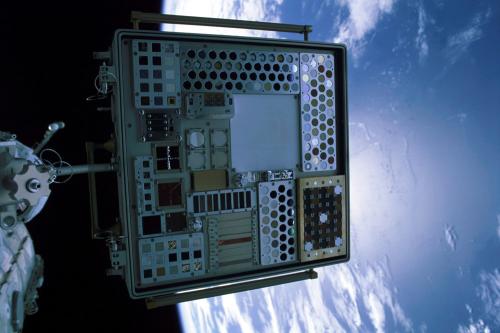Suitcase-sized ‘space nuclear power plant’ to ‘light up’ homes on Mars
 Washington, August 29: The first nuclear power plant for the production of electricity for manned or unmanned bases on the Moon, Mars and other planets "may really look like it came from outer space" once the concept is brought to fruition, a US scientist says.
Washington, August 29: The first nuclear power plant for the production of electricity for manned or unmanned bases on the Moon, Mars and other planets "may really look like it came from outer space" once the concept is brought to fruition, a US scientist says.
James E. Werner, the project leader at the U. S. Department of Energy (DOE), said that innovative fission technology for surface power applications is far different from the familiar terrestrial nuclear power stations, which sprawl over huge tracts of land and have large structures such as cooling towers.
"People would never recognize the fission power system as a nuclear power reactor," said Werner.
"The reactor itself may be about 1 ½ feet wide by 2 ½ feet high, about the size of a carry-on suitcase. There are no cooling towers.
A fission power system is a compact, reliable, safe system that may be critical to the establishment of outposts or habitats on other planets. Fission power technology can be applied on Earth''s Moon, on Mars, or wherever NASA sees the need for continuous power," he added.
Nuclear power offers some unique capabilities as compared to sunlight and fuel cells that were the mainstays for generating electricity for space missions in the past, said Warner.
"The biggest difference between solar and nuclear reactors is that nuclear reactors can produce power in any environment."
"A fission power system on the Moon could generate 40 kilowatts or more of electric power, approximately the same amount of energy needed to power eight houses on Earth."
In addition, he said that a fission power system could operate in a variety of locations such as in craters, canyons or caves.
Werner contends that once the technology is developed and validated, it may prove to be one of the most affordable and versatile options for providing long-term base power for the space exploration programs.
The team is scheduled to build a technology demonstration unit in 2012.
The study was recently presented at the 242nd National Meeting & Exposition of the American Chemical Society (ACS). (ANI)